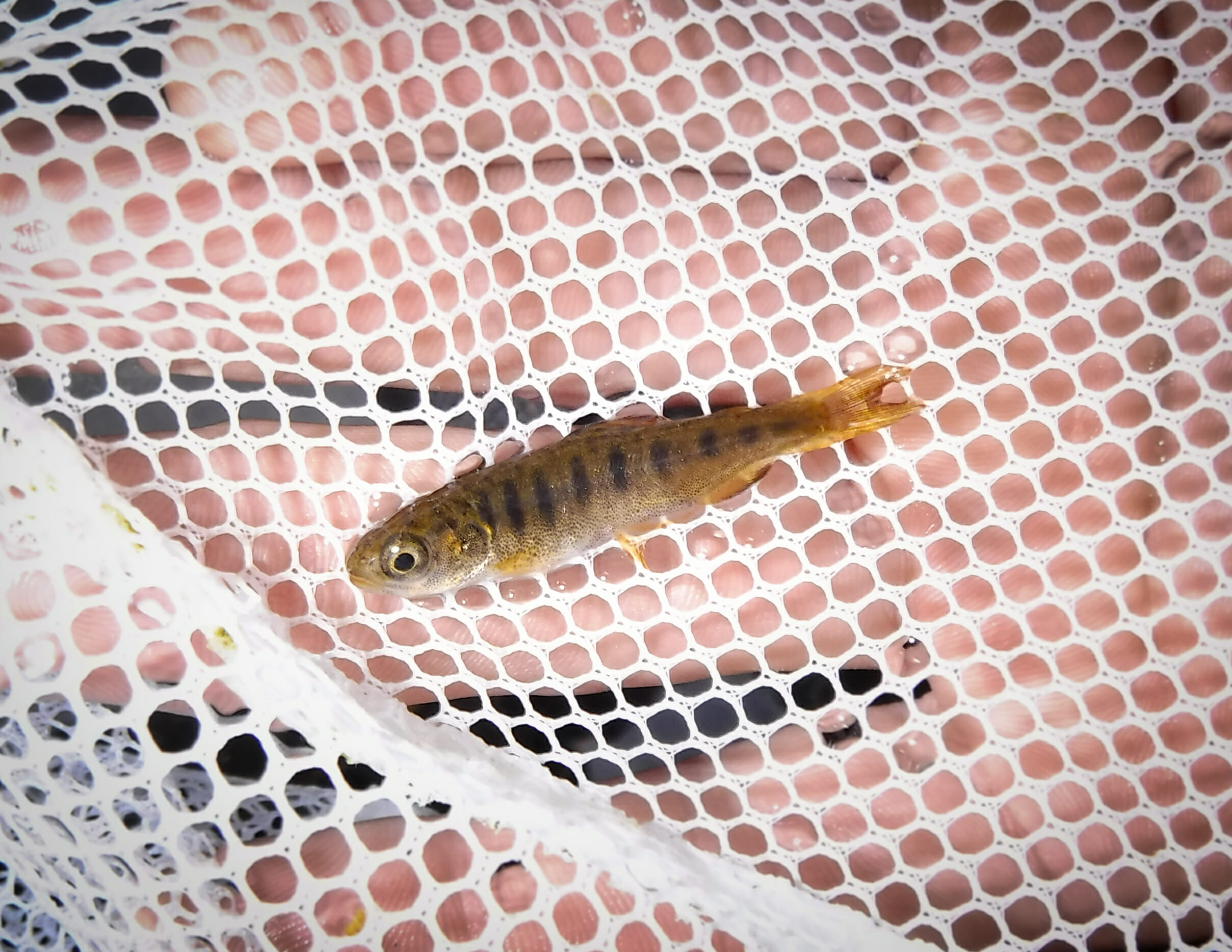A juvenile coho salmon from a small, previously undocumented stream on Douglas Island, Alaska.
By Mark Hieronymus
For the diehard fish nerd, spring is a wonderful time in Alaska. The days get longer and (slightly) warmer, the fresh waters around the state shed their winter cloaks and start to flow again, the fish start to bite, and the latest iteration of the AWC comes out.
Wait. What? The AWC? Is that the new boy band everyone is TikTokking about?
Not quite… the Anadromous Waters Catalog, or AWC for short, is the Alaska Department of Fish and Game’s current list of streams, rivers or lakes in Alaska with anadromous fish habitat. Anadromous fish are born in fresh water, migrate to the ocean to mature, and return to fresh water as adults to spawn. Streams catalogued as having anadromous fish habitat receive statutory protections that anyone looking to use or develop the streambed and adjacent areas must adhere to, so fish resources aren’t harmed in the construction process.
While the AWC currently lists about 32,000 kilometers of habitat being used by anadromous species, ADF&G estimates that less than 50 percent of the anadromous freshwater habitat in Alaska is actually listed in the AWC. In addition to gaps in habitat, many of the in-stream species currently listed are incomplete or the stream lines are incorrect. Until this fish habitat is accurately inventoried and all the species within them fully accounted for, the salmon, steelhead and other anadromous species which rely on the habitat are not afforded protection under Alaska law.

Although small in size, tributaries such as this previously undocumented stream on Douglas Island, Alaska, provide critical rearing habitat for juvenile salmon.
Adding species or waters to the AWC requires site-specific, direct and unambiguous observations of anadromous fish sent to ADF&G as a nomination, followed by a biological and public review process. The nomination review process takes place early in the calendar year and the updated AWC is published annually on June 1. While ADF&G is tasked with surveying for and updating the AWC, there are still a vast number of water bodies in need of surveying and habitat use observations.
In this gap, Trout Unlimited Alaska works to add observational data to the AWC and secure conservation measures for currently unprotected anadromous habitat. TU Alaska started conducting stream surveys and making habitat observations as part of the Fish Habitat Mapping Project in 2018. The project adds to the general body of knowledge regarding anadromous habitat distribution by surveying and making observations in water bodies in Alaska and sharing our findings with ADF&G.
The 2020 field season, while severely curtailed due to COVID-19, yielded several additions for species and waters in the Juneau area that are now listed in the newest AWC. Community Science Coordinator Mark Hieronymus worked solo for most of the season in and around his home waters, doing everything from mapping small, previously unlisted tributaries and documenting the juvenile salmon rearing in those habitats, to sneaking up on pink salmon in larger streams with an underwater camera in order to document them. Mark’s 2020 survey efforts paid off in the form of four new streams with over 2,500 meters of demonstrated anadromous habitat use added to the AWC, as well as the addition of species to four previously AWC listed waters.

Since its start in 2018, the Fish Habitat Mapping Project surveys have resulted in the addition of seven previously undocumented steelhead waters to the AWC, with two more nominations from the 2021 season pending. In addition to surveying for adult steelhead habitat use, we have made observations of and added pink salmon in four streams, coho salmon in three streams, cutthroat trout in three streams and one lake, and Dolly Varden in two streams previously listed in the AWC.
Our juvenile salmonid habitat surveys have resulted in the addition of 15 new streams to the AWC, all of which are used by coho salmon in addition to Dolly Varden and cutthroat trout. When taken in total, these previously undocumented stream additions total over 10.5 kilometers of new anadromous habitat. With our community science effort, TU Alaska plans to continue this important work of documenting habitats and species and invites the public to join in the effort to fill in data gaps and provide basic conservation measures for the fish habitat we all value.
You can follow our progress and learn how you can help.



